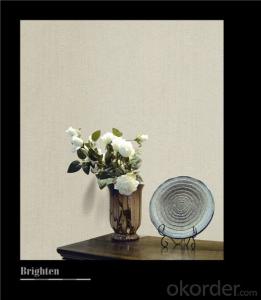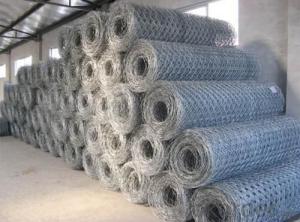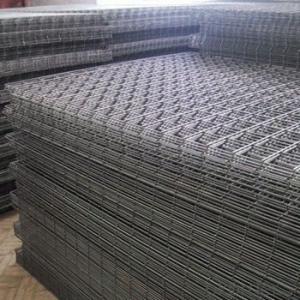Aluminum Plate 1/2 Inch Thick
Aluminum Plate 1/2 Inch Thick Related Searches
Led Light Bulbs For Ceiling Fixtures Led Lamps For Ceiling 42 In Ceiling Fan With Light Aluminum Coil Stock For Gutters Aluminum Foil For The Grill Hole Saw For Aluminum Plate Aluminum Tread Plate For Trailer Bow Plate For Aluminum Boat Aluminum Foil For Grow Room Aluminum Foil For Joint PainHot Searches
Stock Price For Aluminum Aluminum Coil Stock For Sale Aluminum Gutter Coil For Sale Used Aluminum Scaffolding For Sale 1/4 Aluminum Plate For Sale Aluminum Bar Stock For Sale Aluminum Round Stock For Sale Aluminum Diamond Plate For Sale Aluminum Scaffolding For Sale Craigslist 6061 Aluminum Plate For Sale Aluminum Dock Plate For Sale 7075 Aluminum Plate For Sale Aluminum Tread Plate For Sale Aluminum Checker Plate For Sale Aluminum Plate For Sale Near Me Plate Aluminum For Sale Aluminum Plate For Sale Aluminum Square Stock For Sale Aluminum Flat Stock For Sale Billet Aluminum Stock For SaleAluminum Plate 1/2 Inch Thick Supplier & Manufacturer from China
Okorder.com is a professional Aluminum Plate 1/2 Inch Thick supplier & manufacturer, offers integrated one-stop services including real-time quoting and online cargo tracking. We are funded by CNBM Group, a Fortune 500 enterprise and the largest Aluminum Plate 1/2 Inch Thick firm in China.Hot Products
FAQ
- There are several methods of heat treating aluminum sheet, each with its own purpose and desired outcome. Some of the common methods include: 1. Solution Heat Treatment: This process involves heating the aluminum sheet to a specific temperature, typically between 900-1000°F (480-540°C), and holding it at that temperature for a set amount of time. This helps dissolve any soluble alloying elements present in the aluminum, resulting in a more uniform structure. 2. Quenching: After the solution heat treatment, the aluminum sheet is rapidly cooled by quenching in water, oil, or air. This rapid cooling helps lock in the desired microstructure and properties, such as increased strength and hardness. 3. Aging: Once quenched, the aluminum sheet is subjected to an aging process, which involves heating it to a lower temperature, typically between 250-450°F (120-230°C), and holding it there for a specific duration. This allows for the precipitation of fine particles within the aluminum matrix, improving its strength and hardness even further. 4. Precipitation Hardening: This method is used for certain aluminum alloys, such as 2000 and 7000 series, which respond well to precipitation hardening. It involves a combination of solution heat treatment, quenching, and aging, resulting in a highly strengthened and durable aluminum sheet. 5. Annealing: Annealing is a heat treatment process used to soften the aluminum sheet and relieve any internal stresses. It involves heating the sheet to a specific temperature, usually around 600-700°F (315-370°C), and then slowly cooling it. This helps improve the formability and machinability of the aluminum. 6. Stress Relieving: This method is similar to annealing but is specifically used to reduce residual stresses in the aluminum sheet after fabrication. It involves heating the sheet to a temperature below its annealing temperature and then slowly cooling it. Overall, the choice of heat treatment method for aluminum sheet depends on the desired properties, alloy composition, and intended application. Each method offers distinct advantages and can significantly enhance the mechanical and physical properties of the aluminum sheet.
- Yes, aluminum sheets can certainly be used for manufacturing furniture. Aluminum is a lightweight and strong material, making it ideal for creating furniture that is both durable and easy to move around. Additionally, aluminum is resistant to corrosion, so it can withstand exposure to various environmental conditions. Moreover, aluminum sheets can be easily shaped and formed into different designs, allowing for versatility in furniture manufacturing. Overall, using aluminum sheets for furniture manufacturing can result in high-quality, stylish, and long-lasting pieces.
- what were the cinergy field (riverfront stadium, cincinnati, oh) seats made of? were they metal or aluminum? i know they were silver under the red paint...
- If Cinergy isn't the concentration of the drawing, it particularly is probable in simple terms th at they have not as much as date the drawing of the skyline. If there's an indicator on the packaging layout, then removing the stadium might require them to resubmit the trademark utility, and that they probable do no longer evaluate it relatively easily worth the difficulty.
- I've heard twice in the past 2 days on ESPN that they think Aluminum bats are dangerous. I disagree with this cause if they were dangerous why would they allow them to use them in college and high school. Isnt that what the BESR certification mean that the bat is safe that the ball isnt going to come off at super high speeds. i just wanted to get your opinion.
- Yes I heard this also and let me tell you something the wooden bats are also dangerous. I hate hitting a ball and then I get stung and that hurts. I like the aluminum bats better, so they should just keep them on the market because they are not so much dangerous then the wooden one's.
- There are several advantages of using aluminum sheets compared to other materials. Firstly, aluminum sheets are lightweight, which makes them easy to transport and handle. This characteristic also makes them ideal for applications where weight reduction is crucial, such as in aerospace, automotive, and marine industries. Secondly, aluminum sheets have excellent corrosion resistance. They naturally form a protective oxide layer on their surface, which prevents further oxidation and corrosion. This property makes them suitable for outdoor applications, as they can withstand various weather conditions without deteriorating. Thirdly, aluminum sheets have high thermal conductivity. This means they can efficiently transfer heat, making them ideal for heat exchangers and other applications that require efficient heat dissipation. Moreover, aluminum sheets have excellent formability. They can be easily fabricated into different shapes and sizes, making them versatile for various industries. This formability also allows for complex designs and intricate details to be achieved. Furthermore, aluminum sheets have good electrical conductivity. This makes them suitable for electrical applications, such as wiring and electrical conductors. Another advantage of aluminum sheets is their recyclability. Aluminum is one of the most sustainable metals, as it can be recycled repeatedly without losing its quality or properties. This makes aluminum sheets an environmentally friendly choice. Lastly, aluminum sheets are cost-effective. Compared to other materials, aluminum is relatively affordable, making it a popular choice for many industries. In conclusion, the advantages of using aluminum sheets include their lightweight nature, excellent corrosion resistance, high thermal conductivity, good formability, electrical conductivity, recyclability, and cost-effectiveness. These properties make aluminum sheets a versatile and sustainable material for a wide range of applications.
- One advantage of using 101 aluminum sheets is their high strength-to-weight ratio, making them lightweight yet durable. Additionally, aluminum is highly resistant to corrosion, making it suitable for outdoor applications without the need for additional protective coatings. Aluminum sheets are also easy to work with due to their malleability, allowing for various forming and fabrication processes. Lastly, aluminum is a highly recyclable material, making it an environmentally friendly choice.
- Aluminum sheets have excellent fire resistance properties due to their high melting point and low flammability. When exposed to fire, aluminum forms a protective oxide layer that acts as a barrier, preventing further heat transfer and combustion. This makes aluminum sheets a reliable choice for applications where fire safety is a concern.














































